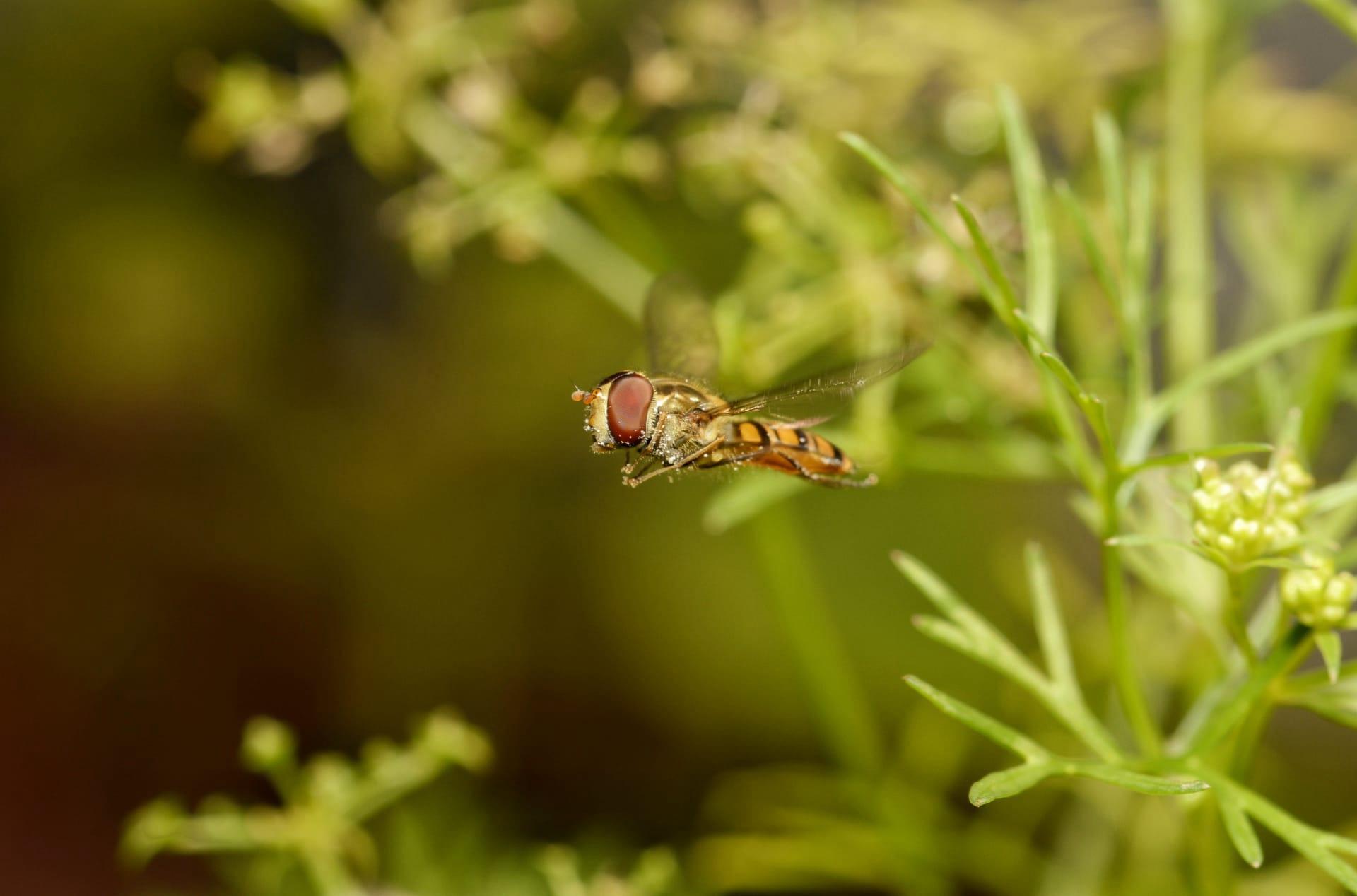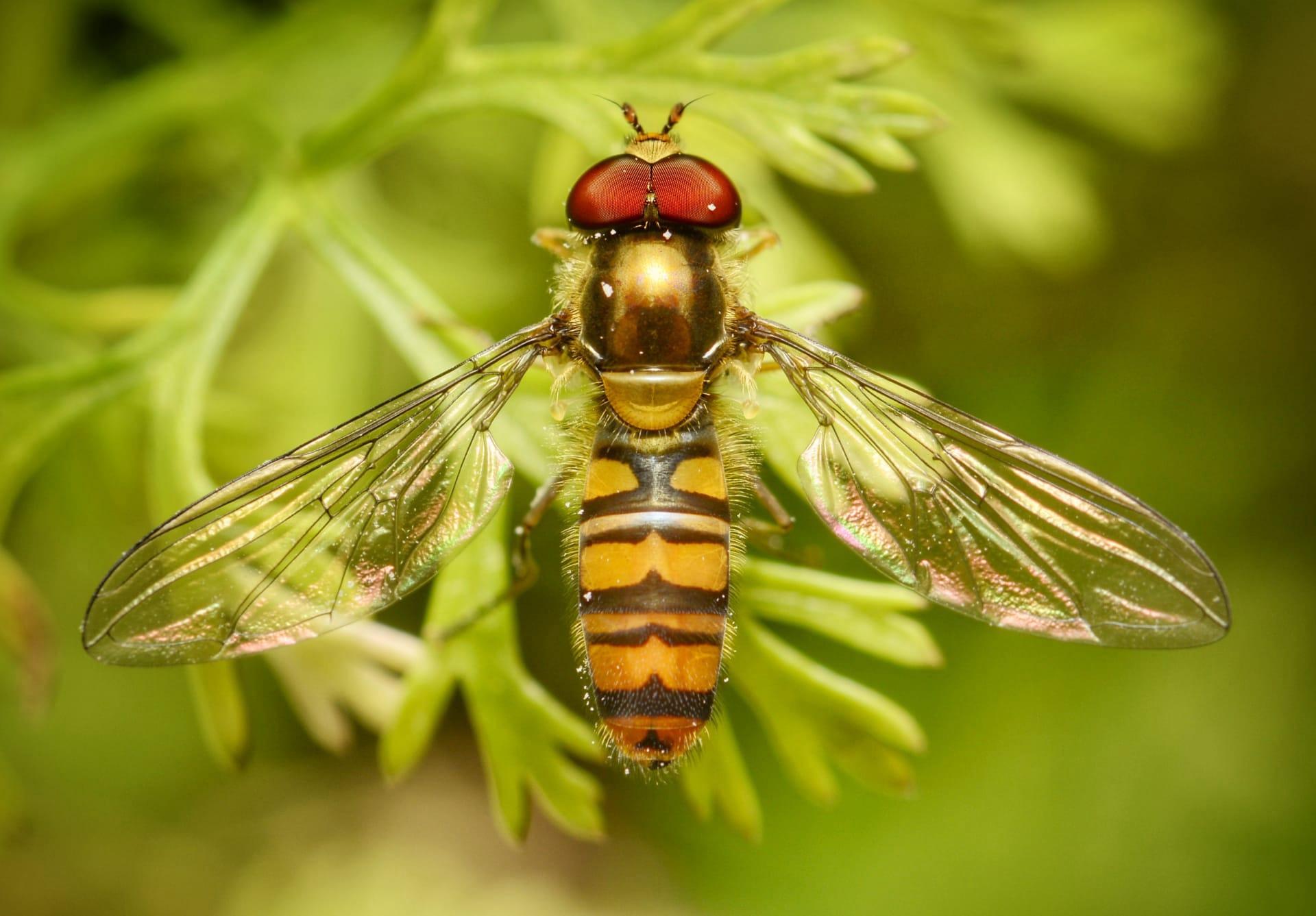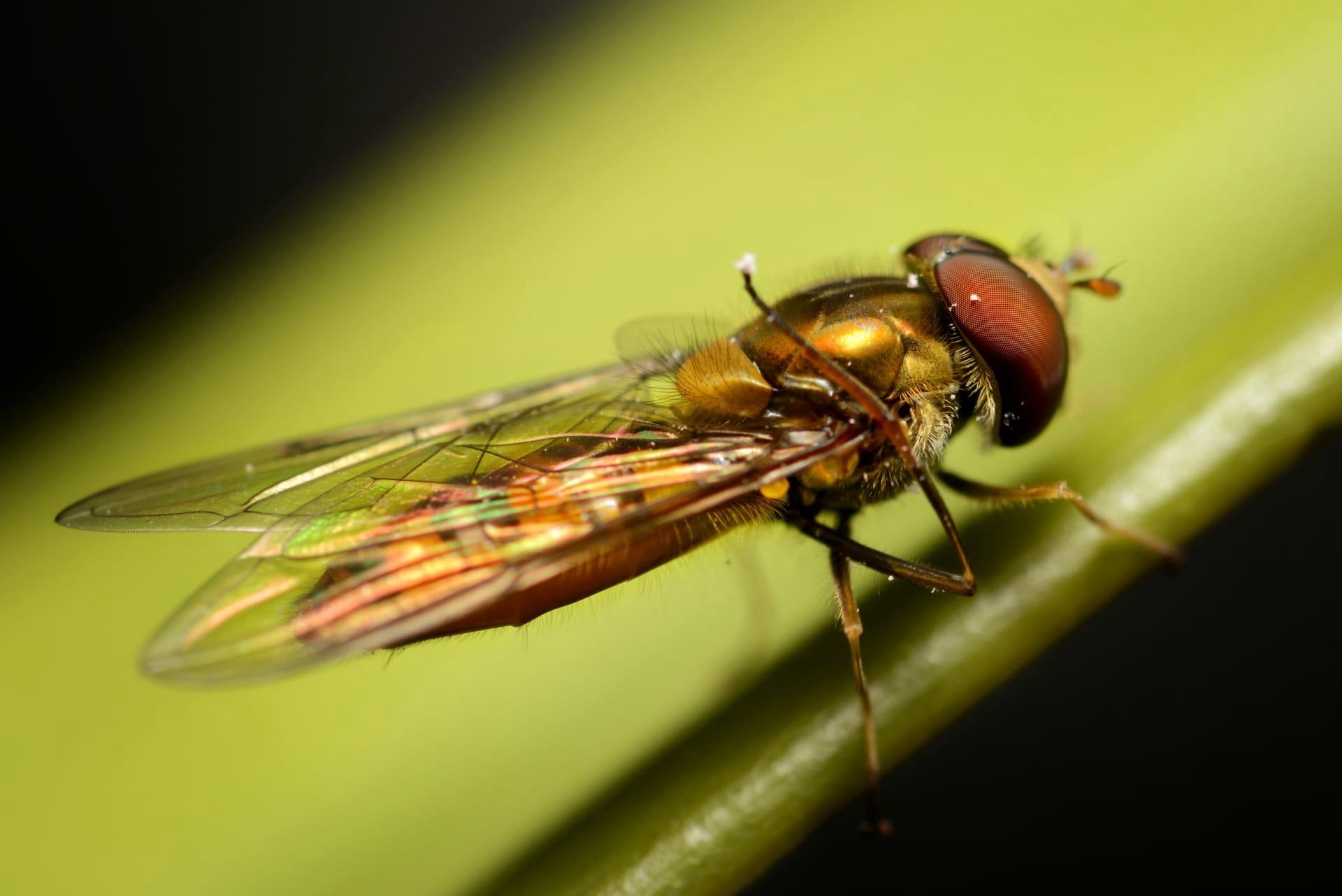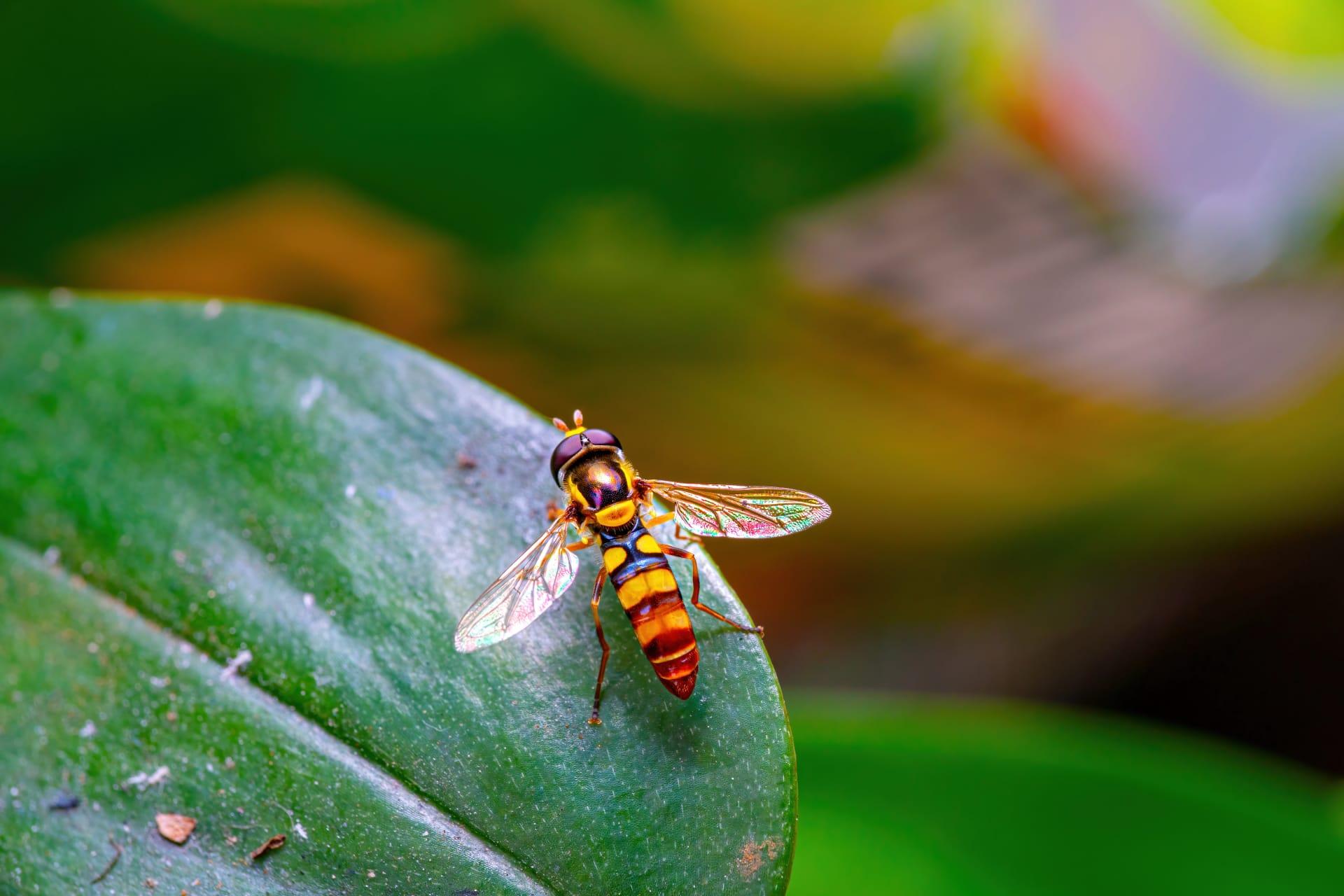Hoverfly Characteristics
- Home /
- Mini Encyclopedia /
- Animal /
- Hoverfly Characteristics
1
Hoverflies, scientifically known as members of the family Syrphidae, are fascinating insects with distinct physical characteristics. On average, these flies measure about 0.4 to 0.8 inches (10 to 20 millimeters) in length. They exhibit a remarkable variety of colors and patterns, often mimicking bees and wasps, which is a clever survival tactic. The lifespan of a hoverfly is quite short, typically only living for a few weeks to a couple of months, depending on environmental conditions and food availability.
The most distinctive organ of a hoverfly is its wings. Unique among many flying insects, hoverflies have a rapid wingbeat, averaging 120 beats per second, which allows them to hover in mid-air with incredible precision. This wing structure is supported by a robust muscular system, enabling them to perform advanced aerobatic maneuvers like swift sideways movements and even flying backwards. These abilities are not just for show; they play a critical role in feeding and avoiding predators.

2
Question: Why do hoverflies often mimic bees and wasps in appearance?
Answer: Hoverflies mimic bees and wasps as a survival strategy, a phenomenon known as Batesian mimicry. This mimicry serves as a deterrent to predators, as the resemblance to stinging insects like bees and wasps makes predators hesitant to attack. Interestingly, hoverflies are harmless and do not possess stingers. This deceptive appearance is a clever evolutionary adaptation, enabling them to survive in environments where predators are abundant. It’s a classic case of “look dangerous, but be gentle,” ensuring their safety in a natural, cost-effective way.

3
Hoverflies exhibit remarkable movement characteristics. They are known for their ability to hover in place, an ability facilitated by their rapid wing beats. This hovering is not just a static position; hoverflies can move swiftly in any direction, making them agile flyers. They can even make sharp turns at high speeds. This agility is essential for escape from predators and for navigating through complex environments like dense vegetation.
In terms of feeding, hoverflies primarily consume nectar and pollen, making them important pollinators in various ecosystems. They have specially adapted mouthparts for this diet, featuring a long, flexible proboscis that allows them to extract nectar from flowers. This feeding style is gentle and non-destructive, meaning hoverflies can visit a wide range of flowers without damaging them. This characteristic is beneficial for both the hoverfly and the plants they visit, as it aids in the pollination process while providing nutrition to the hoverfly.

4
Hoverflies are versatile when it comes to their habitat. They are found in a wide range of environments, from gardens and meadows to forests and wetlands. These flies prefer areas rich in flowers, as this provides them with ample food sources. Additionally, they are also found in agricultural fields where they play a role in pest control by preying on aphids.
Reproduction and lifecycle of hoverflies are equally intriguing. Females lay their eggs in close proximity to aphid colonies, the primary food source for hoverfly larvae. Upon hatching, the larvae feed voraciously on aphids, making them beneficial for natural pest control. The lifecycle from egg to adult hoverfly is relatively quick, allowing for several generations to occur within a single season. This rapid lifecycle contributes to their ability to adapt to changing environmental conditions and maintain their population numbers.

5
Book: "Hoverfly Ecology: Natural History and Behavior" – This comprehensive guide delves into the intriguing world of hoverflies. Published in the United States in the early 21st century by renowned entomologist Dr. Emily Hart, the book offers a detailed look at hoverfly behavior, ecology, and their role in ecosystems. Hart's work is particularly notable for its exploration of hoverfly mimicry and pollination behaviors, providing valuable insights for both scientific and general audiences.
Book: "The Secret Life of Hoverflies" – Authored by British naturalist Ian Dawson and published in the late 20th century, this book is a captivating exploration of hoverflies. Dawson's narrative style brings the reader into the small yet fascinating world of these insects, covering aspects like lifecycle, habitat, and their importance in natural pest control. The book is praised for making complex scientific concepts accessible to a wide audience, enhancing understanding and appreciation of these often-overlooked insects.